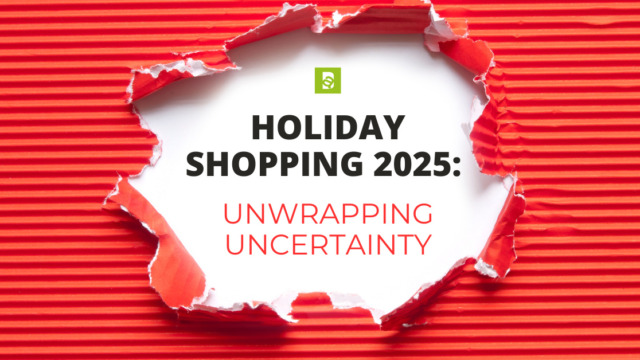Holiday Shopping Trends 2025: Unwrapping Uncertainty
For the first time since 2020, average holiday spending per person is projected to fall—down about 5%, according to PwC’s Holiday Outlook. Inflation fatigue, tariff concerns, and a late Thanksgiving are leaving consumers and marketers cautious. The big question: who’s cutting back, why, and how should marketers prepare?
The biggest divide is generational. Gen Z, facing early-career hurdles and lean savings, plans to cut holiday spending by nearly a quarter. Millennials are holding steady, while Gen X is nudging spending up slightly. Baby Boomers are proving the most resilient, increasing their holiday outlays by about 5%. In short, younger shoppers are tightening belts while older ones keep traditions alive.¹
What Consumers Are Still Spending On
Despite the belt-tightening, certain categories remain strong:
Travel: 44% of consumers still expect to travel, nearly identical to last year.²
At-home traditions: About 72% still plan to cook a holiday meal.³
Practical gifts: Wine, specialty foods, and consumable treats resonate across age groups.
When the Spending Happens
Holiday shopping in 2025 is compressed into a frenzied five-day burst—Thanksgiving through Cyber Monday. Nearly 40% of gift budgets are spent in that window, and close to 80% of holiday shopping wraps by Cyber Monday.⁴
Retailers need to lock in plans early. Many campaigns now launch in September, accelerated by Amazon’s October Prime Day. The smartest sequence:
Build awareness with TV and CTV before Prime Day.
Retarget high-intent viewers afterwards with tailored CTV offers.
Messaging note: With fragile confidence, value messaging is non-negotiable—but emotional payoff and aspirational storytelling help close the sale.
CTV and Mobile Take Center Stage
Marketers are leaning heavily on CTV this holiday season. Its flexibility in messaging, flighting, and real-time optimizations allows advertisers to adjust creative on the fly and sharpen results. With budgets under scrutiny, CTV’s transparent buying models and strong attribution make it a clear winner for ROI.
Meanwhile, mobile commerce is forecast to account for over half of digital holiday sales and more than 11% of all holiday retail sales.⁴ Shoppers are relying on phones to browse, compare prices, and check inventory in-store. Rising delivery costs are pushing many toward buy-online-pick-up-in-store, making seamless mobile experiences essential.
The Takeaway
Holiday 2025 won’t be defined by unrestrained splurging, but by:
Strategic spending
Practical gifting
Digital-first shopping behaviors
The brands that win will:
Start campaigns early and sustain them through December.
Balance value with emotional connection.
Lean into CTV and mobile for agility, measurement, and shopper convenience.
In a season of tighter wallets, marketers must prove that every dollar—both theirs and their customers’—delivers maximum impact.
Sources:
*¹ The Guardian+10PwC+10New York Post+10 and Axios+2PwC+2
*³ PwC+1
*⁴ Emarketer



